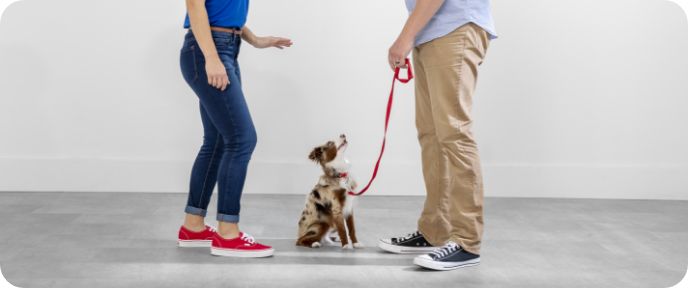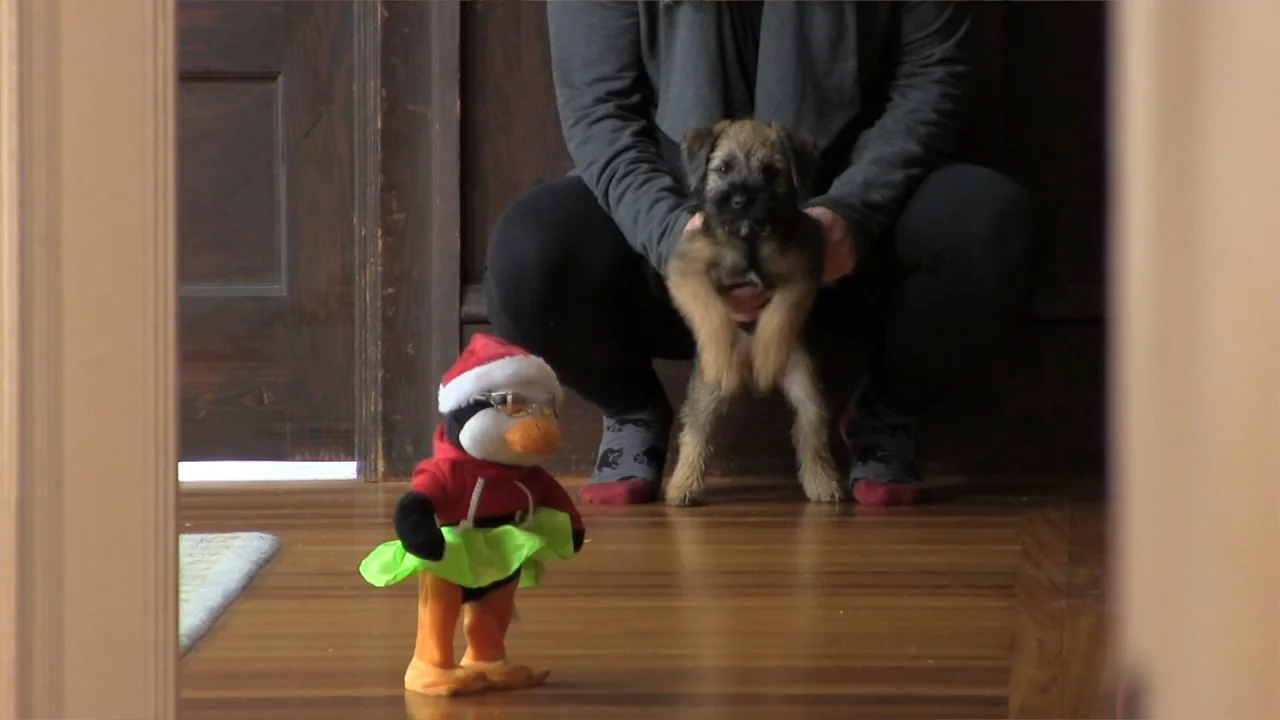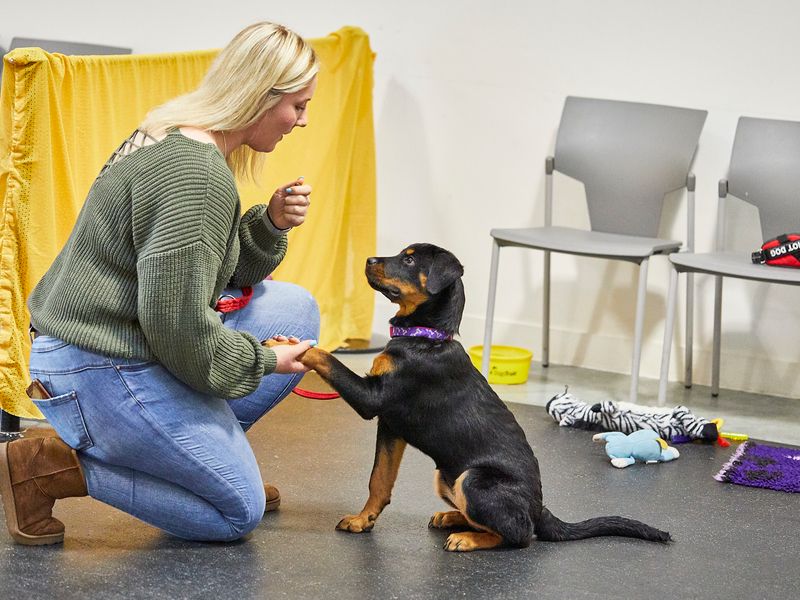Leading Puppy Training Techniques to Guarantee a Well-Behaved Family Pet
Reliable young puppy training is critical for cultivating a well-behaved friend, and various strategies can significantly affect a canine's growth. As we check out these approaches further, it comes to be clear that the success of young puppy training pivots on a combination of approaches that can transform your pet's actions in exceptional ways.
Positive Support Techniques
Making use of positive reinforcement methods is important for efficient pup training, as it motivates wanted actions through benefits as opposed to penalty. This method takes advantage of the natural learning processes of pet dogs, enhancing etiquette by giving immediate and tangible rewards, such as deals with, praise, or play. By linking positive outcomes with certain activities, pups are most likely to duplicate those behaviors in the future.
Efficient positive reinforcement entails timing and uniformity. Incentives need to be offered immediately after the wanted habits takes place to develop a clear link in the young puppy's mind. Furthermore, varying the sorts of benefits can preserve a puppy's interest and motivation throughout the training procedure. For instance, some puppies may respond far better to spoken appreciation while others may choose a favorite plaything or reward.

Consistency in Educating Commands
Keeping consistency in training commands is important for strengthening the lessons found out with favorable reinforcement strategies. Pets prosper on routine and predictability, so making use of the same verbal commands and hand signals for particular actions is essential. This harmony helps young puppies comprehend what is anticipated of them, reducing confusion and disappointment for both the pet dog and the fitness instructor.

Timing additionally plays a significant role in uniformity. Commands must be provided promptly throughout training sessions and complied with promptly by favorable reinforcement, such as treats or appreciation. This immediate response aids solidify the association in between the command and the wanted habits.
Incorporating consistency right into training sessions will develop a stable understanding atmosphere, promoting quicker mastery of commands. Inevitably, a well-structured technique fosters a solid bond in between the young puppy and its proprietor, causing a more well-behaved and obedient pet dog.
Socialization With Various Other Animals
Socializing with other family pets is critical for a pup's advancement, as it aids them discover appropriate habits and interaction abilities in diverse social contexts. Very early communications with various pets can dramatically influence a pup's character and versatility in various scenarios. When pups are subjected to a selection of pets, they end up being more certain and much less fearful, which can stop potential behavioral problems later in life.

Educate your puppy to identify signals from other animals, such as signs of playfulness or discomfort, fostering shared regard and understanding. Normal socializing not just enhances your pup's social skills however additionally contributes to their general well-being, producing a more unified living atmosphere.
Pet Crate Training Conveniences
Recognizing the many advantages of cage training can greatly improve both the pup's and owner's experience. Crate training provides a secure and secure environment for young puppies, guaranteeing they really feel safeguarded when left alone. This complacency can substantially lower anxiousness and anxiety degrees for both the owner and the pet dog.
Additionally, cages work as a beneficial housebreaking tool. Young puppies normally avoid staining their resting location, therefore encouraging them to hold their bladder until they are let outside. This instinct can accelerate the house-training procedure, fostering good habits at an early stage.
When unsupervised,Crate training additionally assists in managing a puppy's behavior - puppy training. By providing a designated room, proprietors can protect against destructive actions, such as eating on furniture or entering damaging materials. Cages can be useful during travel, supplying an acquainted area that can help relax a pup in new settings.
Finally, establishing a cage routine urges self-reliance, allowing pups to discover how to be alone without fear. On the whole, crate training is an effective approach for advertising security, peace, and self-control, leading to a well-adjusted, well-behaved animal.
Chain Training Essentials
Leash training is an essential aspect of responsible pet possession that ensures a enjoyable and risk-free strolling experience for both the puppy and its owner. Correct leash training begins early, preferably during the puppy's socializing duration. When out in public., i was reading this this training assists check these guys out establish excellent habits and advertises positive actions.
To begin, choose a comfy collar or harness that fits your pup well. Attach a durable chain, ensuring it is not also long, as this can lead to pulling and unpredictable actions. Start in a quiet atmosphere to lessen diversions and progressively present your puppy to new surroundings.
Use favorable support strategies, such as deals with and praise, to urge your pup to stroll beside you. If your young puppy pulls, quit walking and wait for them to return to your side before continuing. This teaches them that pulling will not yield forward movement. Consistency is key; practice consistently and continue to be person, as proficiency requires time.
Additionally, incorporate brief training sessions with fun disturbances to construct your young puppy's emphasis. With commitment and persistence, chain training will certainly result in an accommodating companion, making strolls delightful for both the owner and the puppy.
Final Thought
In verdict, utilizing reliable puppy training methods is crucial for creating a mannerly pet dog. Generally, these approaches collectively advertise an unified connection between young puppies and their owners.
As we check out these approaches further, it ends up being clear that the success of pup training hinges on a combination of methods that can change your animal's actions in exceptional ways.
Utilizing positive support strategies is important for efficient young puppy training, as it encourages desired habits through rewards rather than punishment.Crate training likewise helps in handling a pup's actions when unsupervised.Leash training is an essential element of liable animal possession that ensures a Continued pleasurable and risk-free walking experience for both the young puppy and its owner.In conclusion, utilizing efficient puppy training methods is important for creating a mannerly family pet.